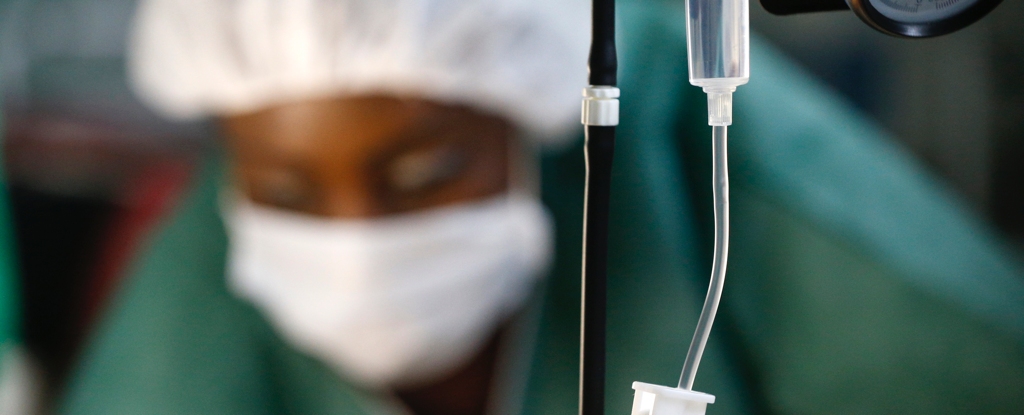Key Takeaways:
I. Rapid and accurate diagnostics are crucial for timely identification and containment of novel pathogens, yet existing infrastructure in resource-limited settings often falls short.
II. Socioeconomic factors, such as poverty, limited healthcare access, and malnutrition, significantly exacerbate vulnerability to infectious disease outbreaks.
III. International collaboration, including data sharing, resource mobilization, and coordinated response efforts, is paramount for preventing regional outbreaks from escalating into global health crises.
A mysterious and fatal disease, tentatively named "Disease X," has emerged in the Democratic Republic of Congo (DRC), claiming between 67 and 143 lives within just two weeks. This alarmingly rapid spread and high mortality rate, primarily affecting women and children, raise serious concerns about a potential global pandemic. The outbreak underscores the critical need for robust and responsive health systems, advanced diagnostic capabilities, and effective international collaboration. This article provides a comprehensive analysis of the Disease X outbreak, exploring its diagnostic challenges, socioeconomic vulnerabilities, and geopolitical implications, while offering insights into proactive pandemic preparedness strategies.
Unraveling the Mystery: The Critical Role of Diagnostics in Combating Disease X
Rapid and accurate diagnostics are the cornerstone of effective outbreak response. However, identifying and characterizing novel pathogens presents significant challenges, particularly in resource-limited settings like the DRC, where existing laboratory infrastructure and expertise may be insufficient. Traditional methods, such as virus isolation and culture, are time-consuming and require specialized facilities, often unavailable in affected regions. This underscores the urgent need for innovative diagnostic tools and strategies tailored to the specific constraints of these environments.
The Triple Rapid Framework (TRF), which aims to deploy 10,000 point-of-care tests within 10 days of outbreak detection with results available in under a minute, offers a promising approach for rapid diagnostics. This framework emphasizes speed, accessibility, and ease of use, making it particularly suitable for resource-constrained environments. However, realizing the full potential of the TRF requires significant investment in research and development, manufacturing capacity, and training of healthcare personnel.
Note: Data limitations and uncertainties exist. See article text for details.
Advancements in diagnostic technologies, such as nucleic acid amplification tests (NAATs), including PCR and isothermal amplification methods, and CRISPR-based diagnostics, hold immense potential for revolutionizing pathogen detection. These technologies offer increased sensitivity, speed, and the possibility of multiplexed testing, enabling the simultaneous detection of multiple pathogens. Furthermore, the development of rapid diagnostic tests (RDTs) based on specific biomarkers, guided by the SASQUATCH criteria (Specific, Abundant, Stable, Quantitatively meaningful, Universal, Accessible, Timely, Characterized, and Heterologously expressible), can significantly enhance point-of-care diagnostic capabilities.
International collaboration in sample sharing and data analysis is essential for accelerating pathogen identification, developing effective countermeasures, and informing public health interventions. However, logistical and ethical challenges, including sample transport and preservation, data privacy concerns, and intellectual property rights, can impede progress. Establishing clear guidelines, standardized protocols, and transparent data-sharing mechanisms are crucial for fostering trust and facilitating effective international collaboration.
The Social Determinants of Health: Understanding the Unequal Burden of Disease X
Socioeconomic factors play a critical role in shaping vulnerability to infectious disease outbreaks. Poverty, limited access to healthcare, inadequate sanitation, and malnutrition create a complex web of interconnected challenges that increase susceptibility to infection and exacerbate the severity of illness. In resource-limited settings like the DRC, these factors often converge, creating a perfect storm for the rapid spread of infectious diseases.
Malnutrition, a pervasive issue in many parts of the DRC, weakens the immune system, making individuals more susceptible to infection and increasing the risk of severe complications. Limited access to healthcare, including a shortage of trained healthcare professionals, essential medications, and adequate facilities, further hinders effective disease management and contributes to higher mortality rates during outbreaks.
Displacement, often a consequence of conflict or natural disasters, disrupts access to healthcare, safe living conditions, and sanitation, creating ideal conditions for the spread of infectious diseases. Displaced populations are particularly vulnerable due to overcrowding, limited access to clean water and hygiene facilities, and increased exposure to environmental risks.

Building community resilience requires a multi-faceted approach that addresses the underlying socioeconomic determinants of health. This includes investing in poverty reduction programs, improving access to nutritious food and clean water, strengthening sanitation infrastructure, and promoting health education to empower communities to protect themselves from infectious diseases.
From Local Outbreak to Global Crisis: The Importance of Coordinated International Action
Infectious disease outbreaks, particularly those involving novel pathogens with pandemic potential, have far-reaching geopolitical implications. The rapid spread of Disease X highlights the interconnectedness of global health security, emphasizing the need for international collaboration in surveillance, data sharing, and coordinated response efforts. Failure to contain outbreaks at their source can destabilize regions, disrupt trade and travel, and strain international relations.
Effective international collaboration requires not only sharing information and resources but also addressing ethical considerations, such as data privacy, intellectual property rights, and equitable access to diagnostics and therapeutics. The Pandemic Fund, established to strengthen pandemic prevention, preparedness, and response, can play a crucial role in mobilizing resources and supporting resource-limited settings. However, its success hinges on the commitment of nations to prioritize global health security and contribute their fair share.
The Path Forward: Investing in Pandemic Preparedness and Global Health Security
The Disease X outbreak serves as a stark reminder that investing in pandemic preparedness is not merely a health expenditure, but a critical investment in global security and economic stability. A comprehensive approach that encompasses strengthening diagnostic capabilities, addressing socioeconomic vulnerabilities, fostering international collaboration, and promoting sustainable development is essential for building a world resilient to future health crises. The cost of inaction far outweighs the investment required to prevent and effectively respond to pandemics, underscoring the urgent need for a proactive, data-driven, and globally coordinated approach to safeguarding human lives and ensuring a more secure future.
----------
Further Reads
I. Rapid diagnostic test: a critical need for outbreak preparedness and ...
II. The Impact of Infectious Diseases on the Development of Africa - PMC









